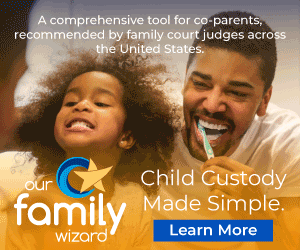(Click here for more coverage of CPSIA.)
With the February 10, 2009, start of enforcement of the Consumer Product Safety Improvement Act of 2008 just 3 days away, we are relieved to see that the Consumer Product Safety Commissions has issued a press release outlining exceptions for children’s books printed using ordinary processes from 1985 onwards and for children’s clothing manufactured using natural fibers.
Read more…
(Click here for our complete coverage of CPSIA.)
Unless the US government acts soon, on February 10, 2009, life as we know it in the United States may become extremely bizarre. Imagine a nation in which it is illegal for:
-
Children age 12 and under to enter libraries or attend schools or daycare facilities unless those schools and daycare facilities have no books or toys.
-
Books and toys for children age 12 and under can only be sold by mass-merchants because home and small businesses and manufacturers cannot afford the testing costs to verify paper, cardboard, glue, and other components do not have illegal levels of lead.
-
Only major publishers running huge print-runs can print children’s books because only they can afford the testing costs.
-
If you can find anybody willing to risk selling you a used children’s book, either they will be criminals or buying a used children’s book will cost upwards of $150 per title because each book will have to be individually tested for lead and phthalates.
-
Tens of thousands of US home and small businesses which have made a major portion of their sales from children’s products go out of business and file for bankruptcy as their inventories go from having value to being worthless because they cannot be sold.
This is all due to the Consumer Product Safety Improvement Act of 2008. The new law requires that products intended for use by children ages 12 and under must meet new standards for lead and phthalate content or they cannot be sold starting February 10, 2009. The law does not have any grandfather provisions for products made prior to February 10, 2009. It apparently affects all products intended for use by children age 12 and under. And it is being interpreted as affecting operations that sell, lend, or allow the use of children’s products by children ages 12 and under.
Read more…
(Click here for our complete coverage of CPSIA.)
As reported last week (see Government Bans Sale of Used Children’s Clothing and Toys !?!), the impending enforcement of the Consumer Products Safety Improvement Act of 2008 starting on February 10, 2009, will change the landscape for children’s clothing and toy sales in the United States. New 600ppm limits on lead will be enforced immediately, and those limits will be lowered to 300ppm and next to 100ppm. Phthalates used to soften plastics must comprise less than 0.1% of the product content. Sellers must be able to show the items they are selling have passed safety tests for lead and phtalate content or they cannot sell the products. The new regulations pertain to products intended for use by children age 12 and under.
A major criticism of this law has been the negative impact on the resale of used children’s clothing and toys. Many consignment shops and charity organizations sell such items, and parents are able to get back some of the value of toys and clothes their children have outgrown. There have been widespread complaints that the new law has the potential to put such businesses out of business.
Read more…
(Click here for our complete coverage of CPSIA.)
The Consumer Product Safety Improvement Act of 2008 (CPSIA) was signed into law by President George W. Bush on August 14, 2008. Starting February 10, 2009, the law bans the sale or resale of products for children age 12 or under that have not been tested to show they contain less than 600ppm of lead and less than 0.1% of certain phthalates (a plastic softener). The law includes plans to move to a 100ppm limit later and force vendors to accept returns of products sold after February 10, 2009, that did not meet the future lower limits.
Read more…




Recent Comments